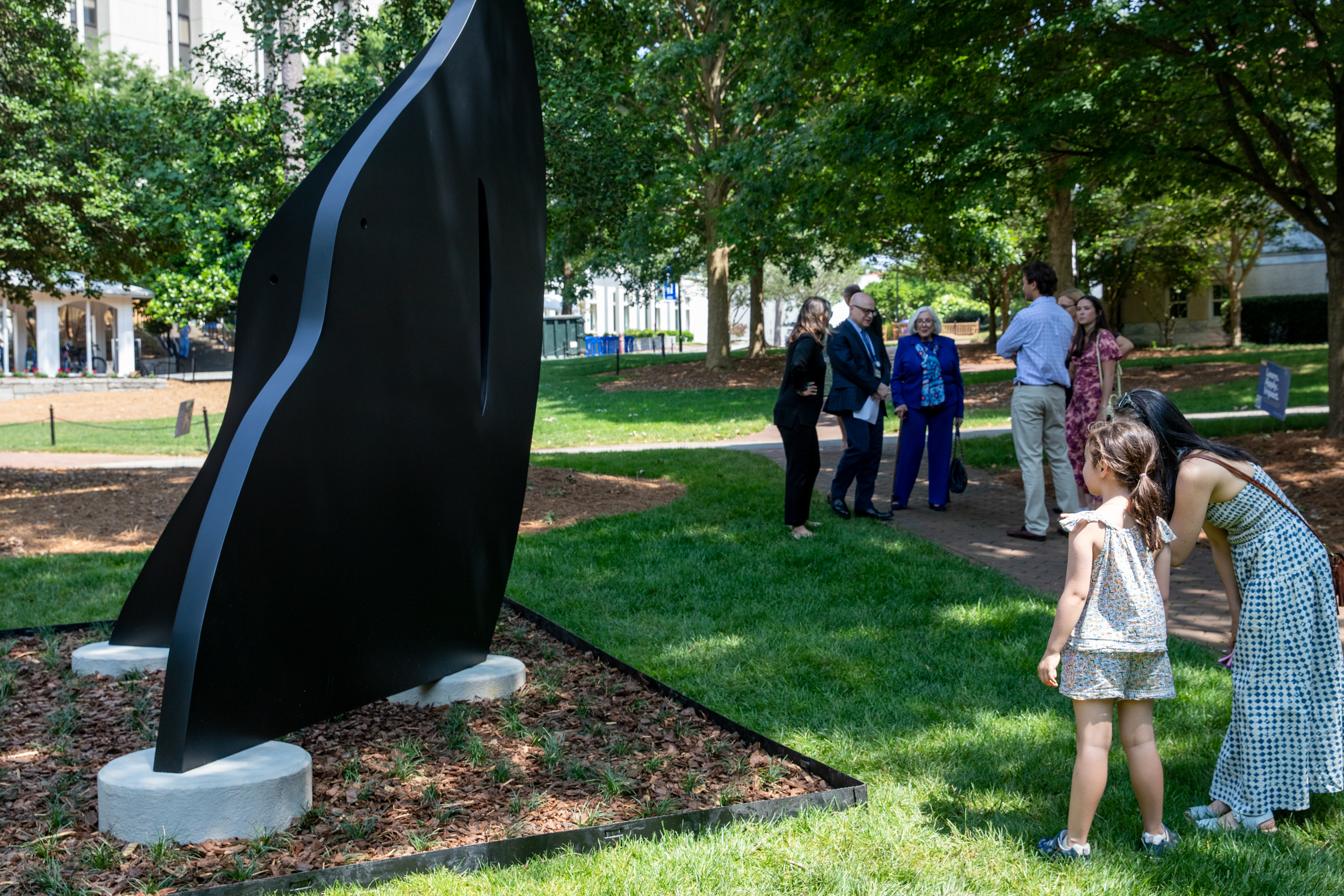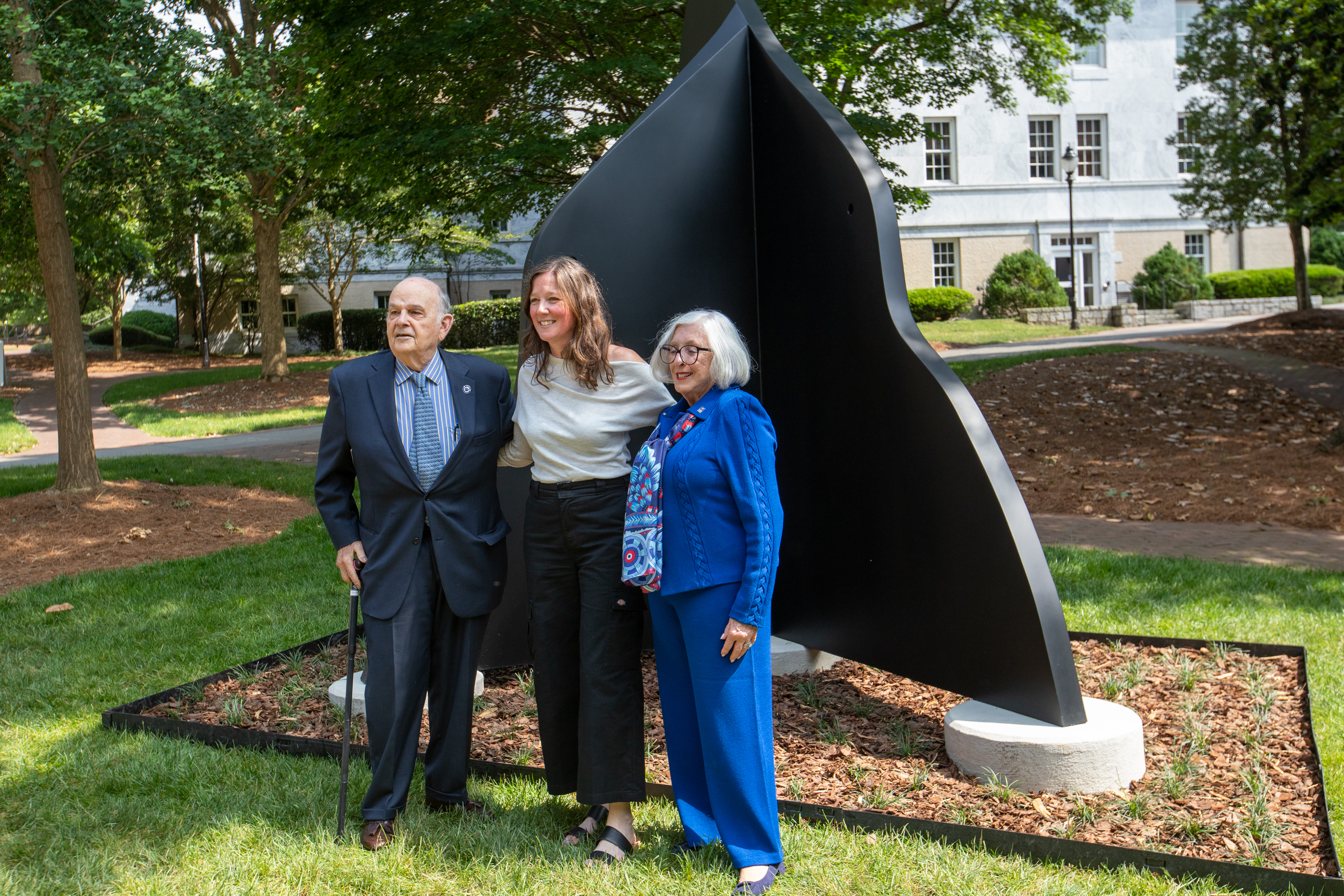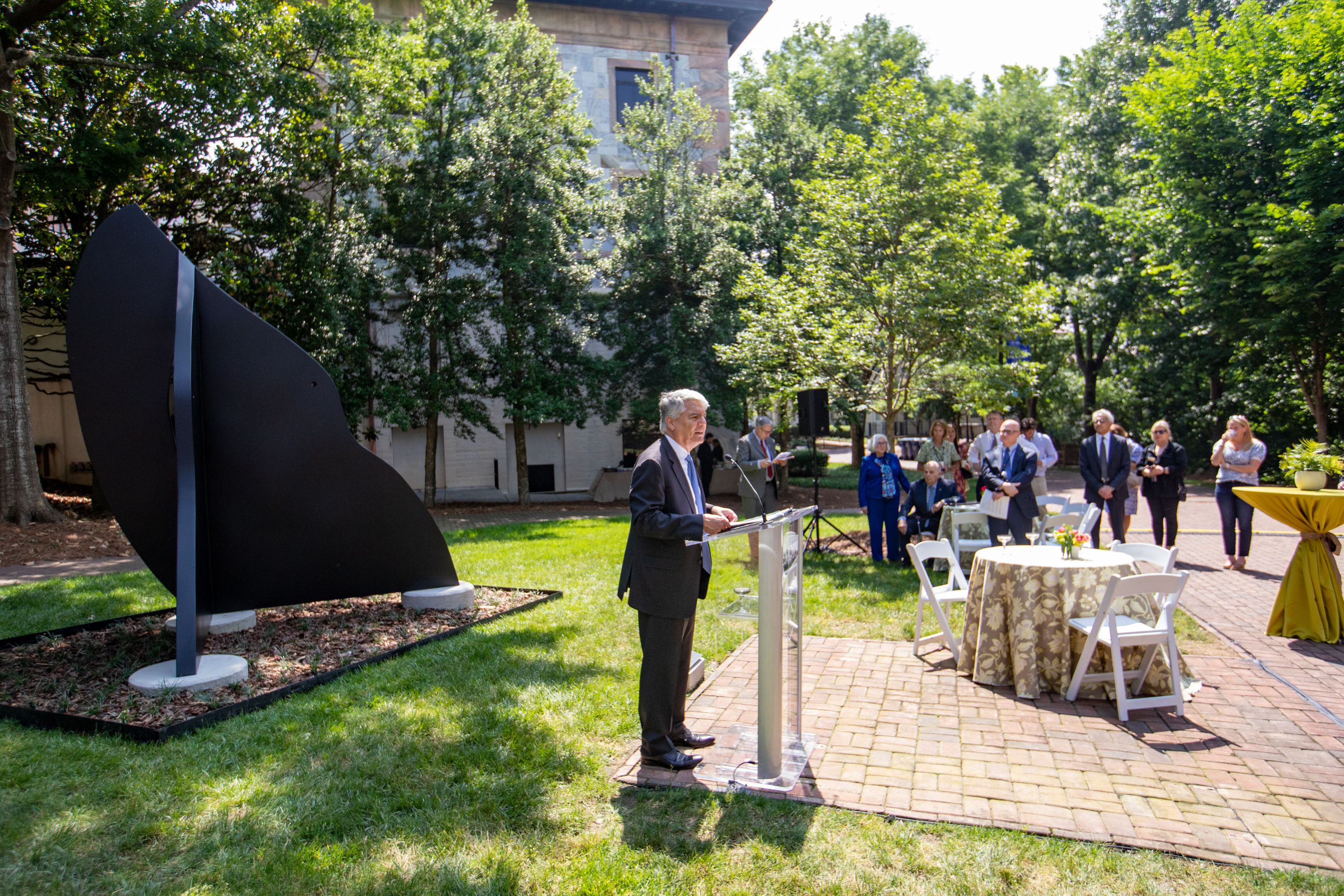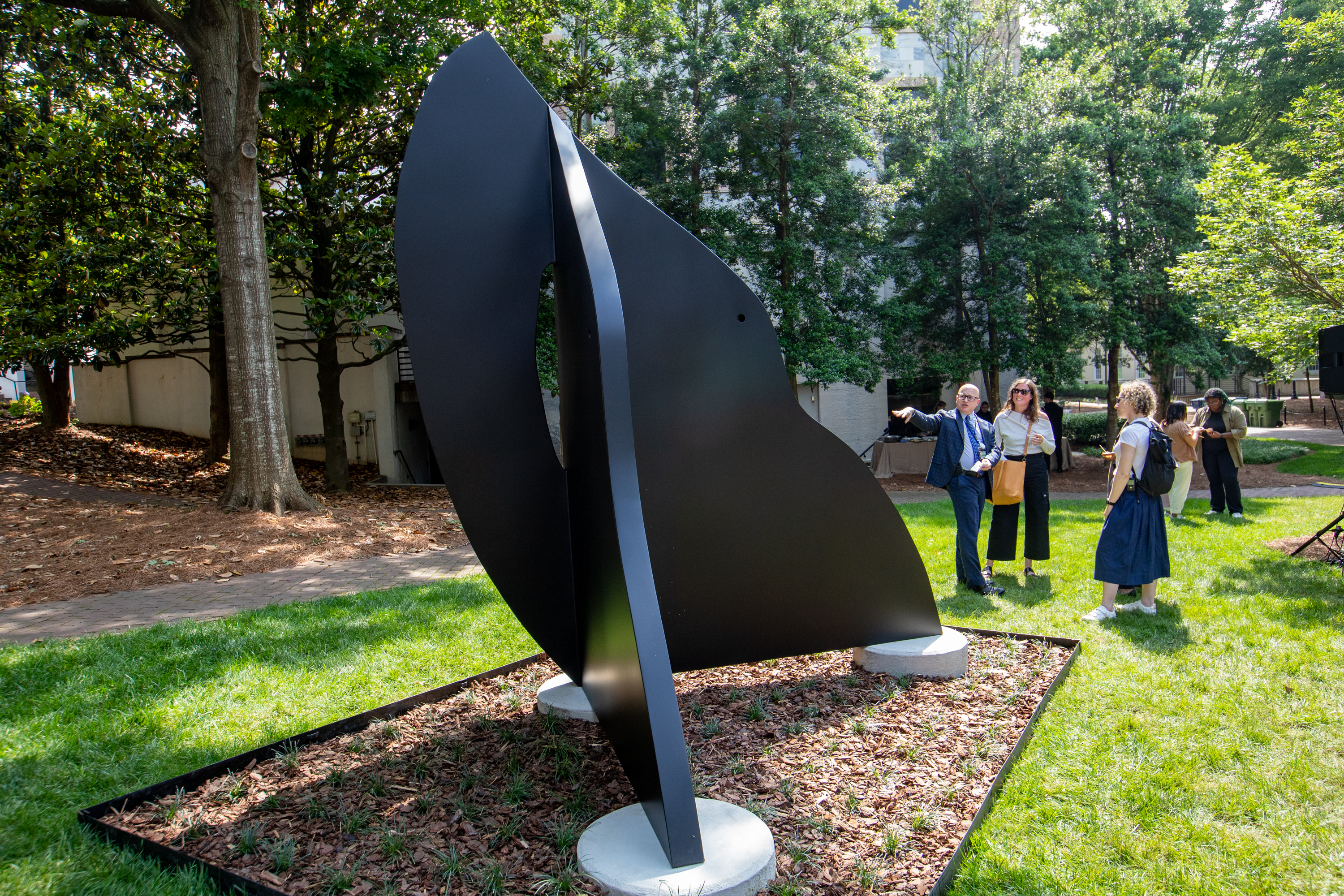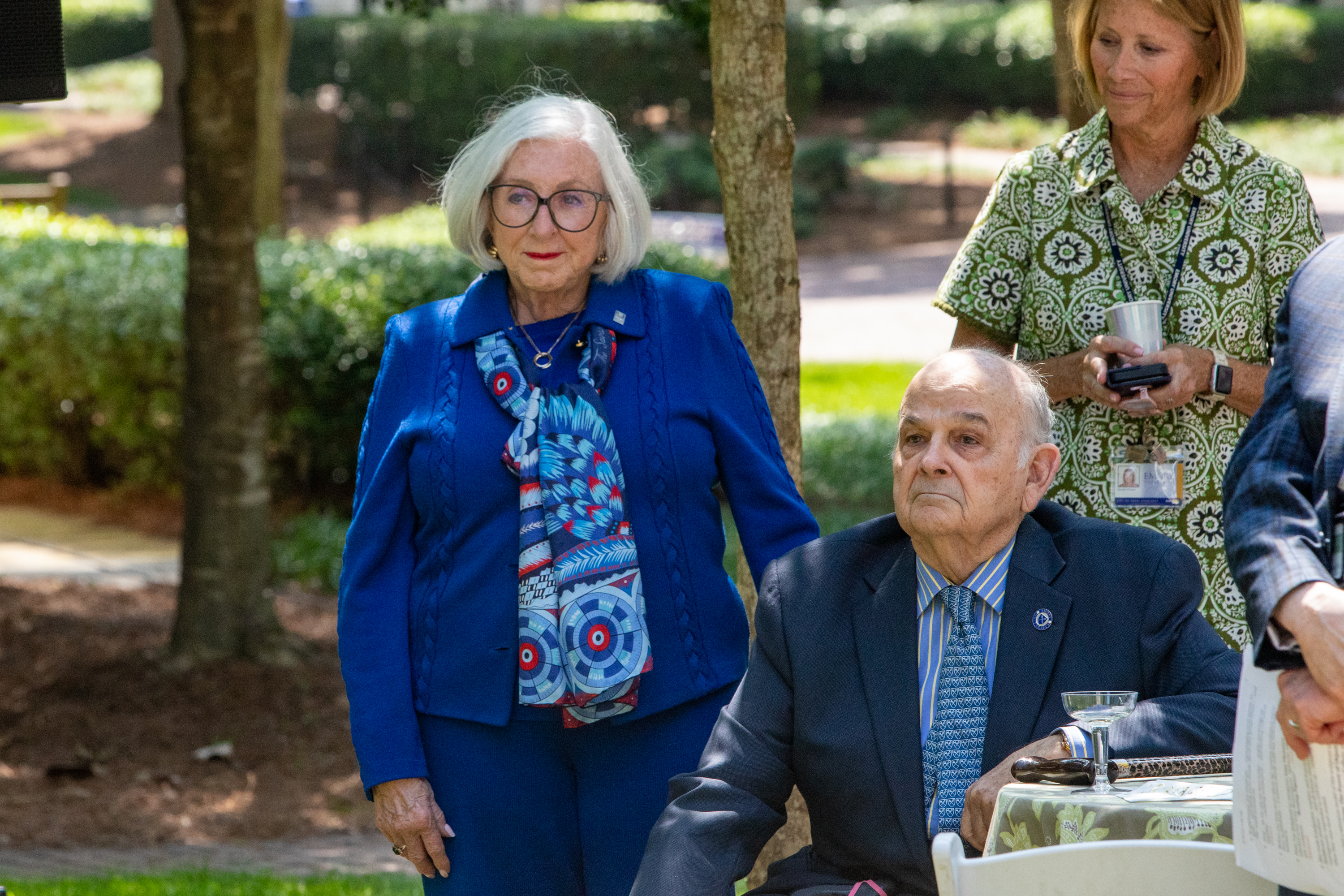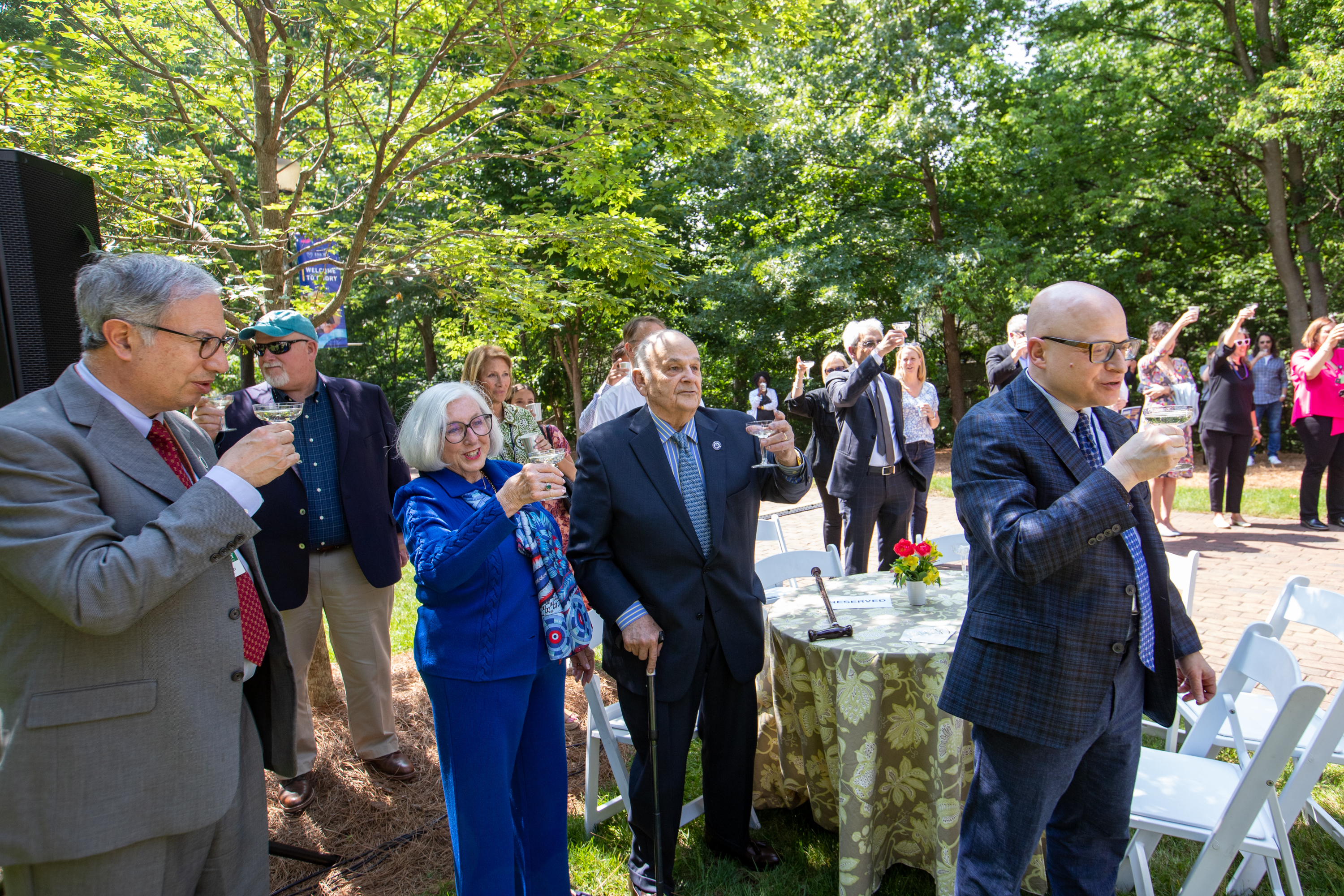The latest addition to Emory’s growing body of public art is the sculpture “Resting Figure,” a work of cast bronze by artist Amy Pleasant. It was commissioned to honor the sacrifice and dedication of Emory Healthcare and university personnel during the COVID-19 pandemic.
For those inclined to take walking advantage of the season's beauty, the sculpture is located beyond the northeast corner of the Callaway Memorial Center at North Kilgo Circle. On May 24, the sculpture was dedicated in a ceremony led by President Gregory L. Fenves.
Fenves began by acknowledging the role of public art, noting: “Public art reflects who we are as individuals but especially as a community. It stimulates new thought and creativity, gives us time to pause during busy and hectic days to think more deeply and perhaps with new perspectives about ourselves, our university and the world around us.”
In challenging times, he added, “art becomes even more essential in our lives as a source for comfort, shared understanding during a crisis and developing that strength to endure. And overcoming a crisis is truly a public act, especially as we all found out during the early months of the COVID-19 pandemic in 2020.”
Chair of Emory’s Public Art Committee David Schuster, an Emory alumnus and director of the Division of Nuclear Medicine and Molecular Imaging, observed that the reclining figure has been immortalized throughout art history and is ever-present in our daily lives.
“Our intent,” he said, “is to give pause to the passerby, to remind each viewer of our connection to one another. It is as if the frontline worker is taking a rest from the battle, ready to spring into action at any minute to meet the demands of the moment.”
Leading patrons of the healing and creative arts
Sidney Yarbrough III, a retired orthopedic surgeon, and his wife, Rebecca — loyal Emory supporters for many years — made the acquisition of the sculpture possible. Four generations of the family, on both sides, have deep ties to the School of Medicine. Sidney Yarbrough graduated from Emory College in 1959 and the School of Medicine in 1963, then completed three medical residencies at Emory.
Both Yarbroughs served on the School of Medicine board of advisers, supporting education, research, development and advocacy. In 1998, Rebecca Yarbrough established the Sidney H. Yarbrough III MD Endowed Scholarship in Medicine. The couple sponsored the Emory School of Medicine’s 150th anniversary celebration in 2004, and the next year they contributed to naming a group-learning room in the James Williams Medical Education Building.
Dedicated patrons of the arts, the Yarbroughs serve on the National Leadership Board of the Michael C. Carlos Museum, and Rebecca Yarbrough is a life trustee of the Columbus Museum.
The artist behind “Resting Figure”
Dana Haugaard, director of integrated visual arts and associate teaching professor at Emory, is a member of the Public Art Committee. Now seeing this project realized, Haugaard comments: “Amy is an extraordinary artist; I am thrilled that Emory gave her an opportunity to work on a scale and scope larger than her usual mode. The result is stunning.”
Pleasant’s work includes painting, drawing and ceramic sculpture, exploring the body and language through repetition, pushing the boundaries between figuration and abstraction. Among recent honors, she was awarded a John Simon Guggenheim Memorial Foundation Fellowship (2018), the South Arts Prize for the State of Alabama (2018), the Joan Mitchell Foundation Painters and Sculptors Award (2015) and the Mary Hambidge Distinguished Artist Award (2015).
What eventually became “Resting Figure” began as a fired and painted clay sculpture in 2018, roughly 15 x 13 x 9 inches, titled “Torso 11.” Acknowledging that taking this smaller piece to the scale of the Emory sculpture was “challenging,” Pleasant concludes that “overall, it was a thrilling experience watching it come to life.” She is no stranger to Atlanta, having produced her first clay sculptures for an exhibition at the Whitespace Gallery in 2014.
For Pleasant, choosing the setting on campus for “Resting Figure” was “very important in creating a reflective space — under the trees, in the grass, facing the creek/tree line.”
“The pandemic reminded us of people we take for granted; doctors, nurses, scientists, first-responders, grocery store clerks,” observes Pleasant. “Above all, we take our bodies for granted. I hope this sculpture and place of rest will remind us of the fragile space we live in and that we all have to take care of each other.”
Beyond the creation of “Resting Figure,” Pleasant will work with Emory’s art history department, taking time to interact with students.
What being on the front lines meant
Carlos del Rio, interim dean of the School of Medicine, had a “leading role in guiding Emory through the pandemic,” noted Fenves, by virtue of his expertise in infectious diseases, global health and epidemiology.
In his remarks, del Rio emphasized that “health care workers around the world were asked to sacrifice their time with family; their mental, physical and emotional health; and early in the pandemic, when we were all afraid because we didn’t know what the risks were, we took the risk upon ourselves and took care of all patients infected with SARS-CoV-2.”
Beyond Emory’s care of thousands of patients during the pandemic, del Rio also pointed to its leadership in clinical trials as well as the development of two drugs to treat the virus, baricitinib and molnupiravir.
In summarizing Emory’s COVID-19 response, del Rio paraphrased Jonathan Mann, founder of the World Health Organization’s Global Programme for AIDS, when he was asked to summarize what was the most important contribution of health care workers in response to the HIV/AIDS epidemic.
“Emory’s most precious contribution during the pandemic was that, as Mann previously noted about AIDS, ‘in a time of plague, we did not flee; we did not hide; we did not separate.’ In fact, we led,” del Rio said.
With that, glasses of bubbly were raised and Fenves led a toast: “May this work by Amy Pleasant serve as a perpetual reminder of Emory University during the crisis of COVID-19. May it be a reminder to everyone in the Emory community what we are able to do when we are working together as a community to serve humanity.”


